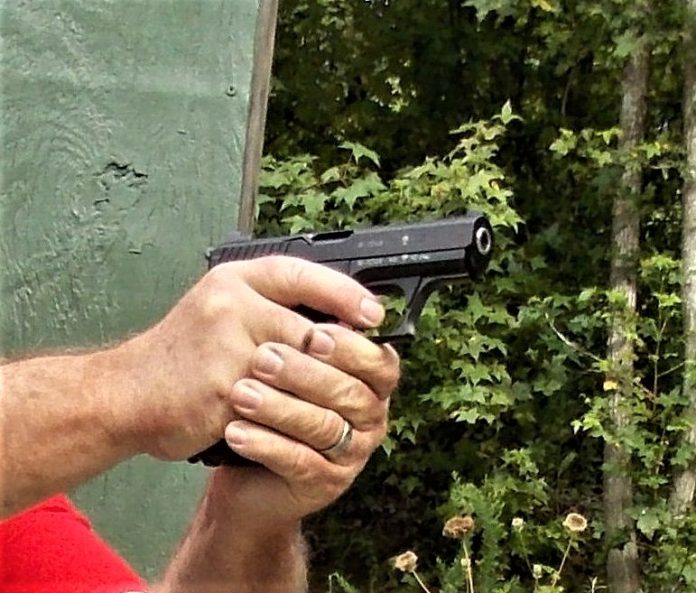
From the SIG-produced Mauser pistols to the Polish Radom, I find handguns that are different immensely interesting. This has never been truer than when considering the German-built Heckler and Koch (HK) P7M8. The pistol was the product of West German police trials, but the initial ground work began as early as 1971. The PSP (Polizei Selbstlade-Pistole, or Police Self-loading Pistol) was a result of West German police doctrine. The handgun had to be simple to operate and while a manual safety was not necessarily mandated, safety features were desirable. The handgun that HK envisioned would also be relatively compact. While SIG later downsized the SIG P 220 into the P 225, the HK PSP was already compact. The overall length was 6.5 inches with a 4.1-inch barrel and a sight radius of 6.0 inches. The handgun is 5.0 inches tall and weighs a solid 30.5 ounces with its steel frame. The slide is low-profile and the 110-degree grip angle fits most hands well. The grip is about 1.4 inches wide, with a relatively modest circumference.
The pistol’s most prominent feature is the cocking lever on the front strap. This lever runs from the tip or foot of the magazine to just under the trigger guard, which is about 2.5 inches. The cocking lever is the operating mechanism. The striker is held in place by a firing pin lock until the cocking lever is pressed. The trigger is also out of battery. When pressure is exerted to cock the handgun, the striker is fully cocked and protrudes from the rear of the slide. The trigger is now set for a single-action trigger press. My personal example features a crisp, short and controllable 2.8 pound trigger compression. The original pistol featured a European-style magazine release. The P7M8 features a paddle-type release. When the pistol is loaded, the magazine is slammed home and the cocking lever is depressed to drop the slide. The pistol is fast into action and fast to reload. I estimate over 10 pounds of pressure is needed to cock the lever, however, once cocked, little pressure is needed to keep the lever pressed, perhaps two pounds at the most. Trigger reach is less than three inches and trigger reset is rapid. If the cocking lever is released the pistol is immediately made safe. The pistol is fully ambidextrous.
The three-dot sights and grooved slide top of the P7M8 are well-done. The sights allow accurate fire well past 25 yards. The HK 9mm pistol uses a delayed blowback or gas-retarded action, unique in my experience. The barrel is fixed, which adds to the pistol’s accuracy potential. The barrel is polygonal rifled. A good gas seal is necessary for this type of action to work. However, since lead bullets could clog the action they must never be used in this handgun. A tiny port in the chamber bleeds gas to a piston on firing. The gas piston does not operate the action like an AR-15 rifle but rather keeps the action closed on firing.
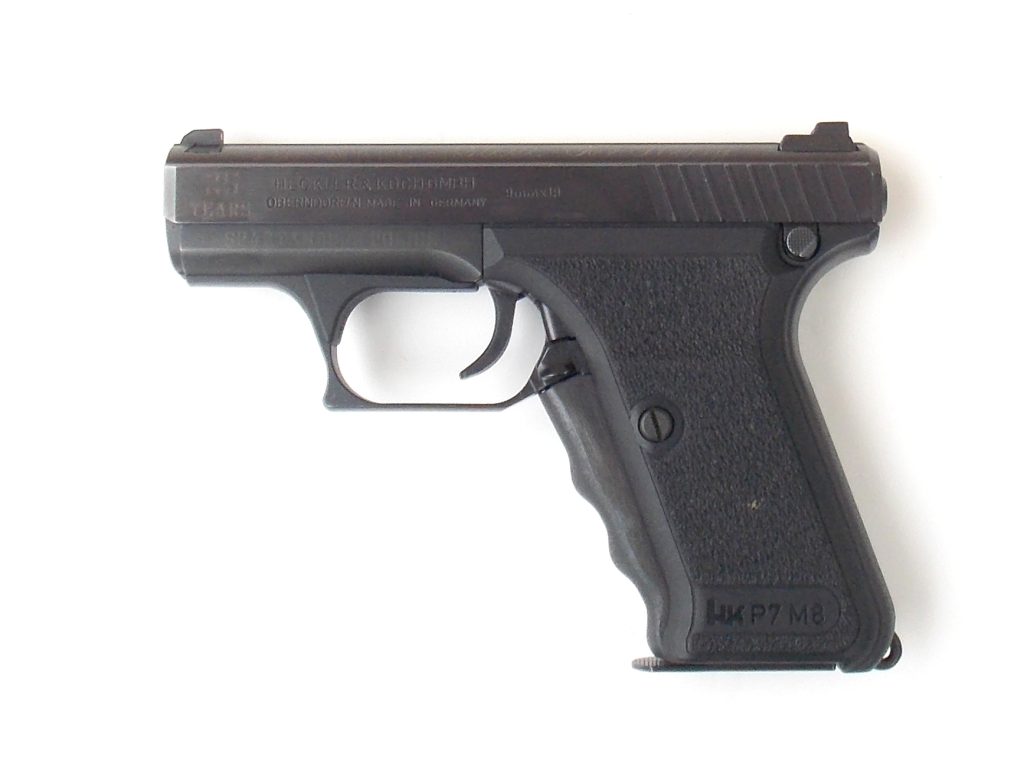
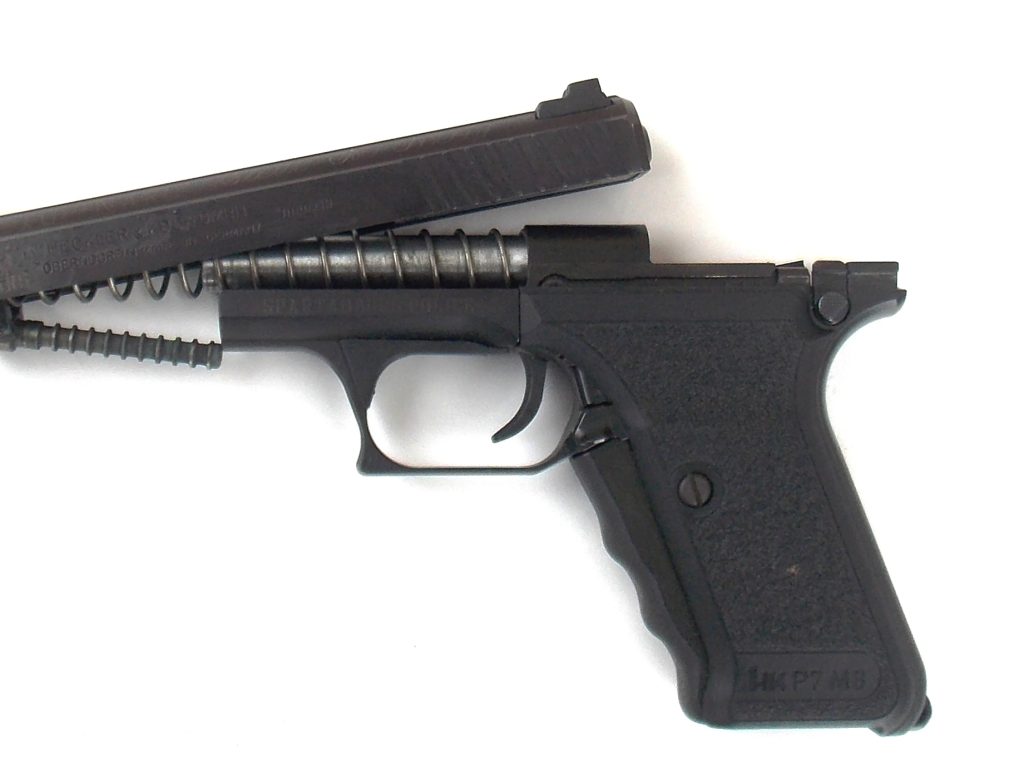
The piston limits rearward motion of the slide. After the bullet has exited the barrel, pressure abates and the slide recoils. Operation is then much like any other blowback pistol. I caution though that due to the gas system the front of the dust cover heats up in firing drills. . Gloves are recommended if you are firing more than 100 rounds during a range session. While there are certain drawbacks-a prohibition against lead bullets and the heating up of the receiver-P7M8 fans will hear no complaints. The pistol is very accurate.
The P7M8 is now out of production. A limiting factor is the time and skilled labor needed to produce such a complicated but durable design. Some have stated that the HK P7M8 is the most reliable handgun in the world. Considering the service record of first quality handguns such as the Beretta 92 and the SIG P226, not to mention the CZ 75, this is a strong statement. Just the same there is much validity to the statement. The pistol listed at well over $1,300 dollars during its last few years in production and today the handgun is bringing top dollar on the used market, with good clean examples beginning at some $1,500 dollars or more.
The test gun is a personal handgun I fired from time to time. For the purposes of this review, the handgun was field-stripped and lubricated prior to firing. Since the unique gas retarded action precludes the use of +P ammunition as well as lead bullet loads, the pistol was evaluated during several standard pressure loadings using jacketed bullets. The overall impression is one of excellent control. The pistol clears leather quickly due to the 110-degree grip design, it fits the hand well and the natural point is excellent. As the hand grasps the handle the lever is cocked as the pistol comes on target. The trigger finger does not engage the trigger until we fire. The pistol lines up on target quickly with a natural point. The first shot hit probability of the handgun is high. Once the first shot is fired, recoil is easily controlled, and the pistol settles back in for fast repeat shots. The slim eight round magazine is easily changed quickly to keep the pistol in action.
I have fired this handgun with a good selection of the standard pressure 9mm Luger loads available. With perhaps 2,500 rounds over the course of a decade fired in the handgun, there have been no failures to feed, chamber, fire or eject. +P loads should not be used, due to the nature of the gas retarded/blowback design. I have fired a considerable quantity of the Fiocchi offerings in this handgun and found accuracy good. These loads have also demonstrated a clean powder burn.

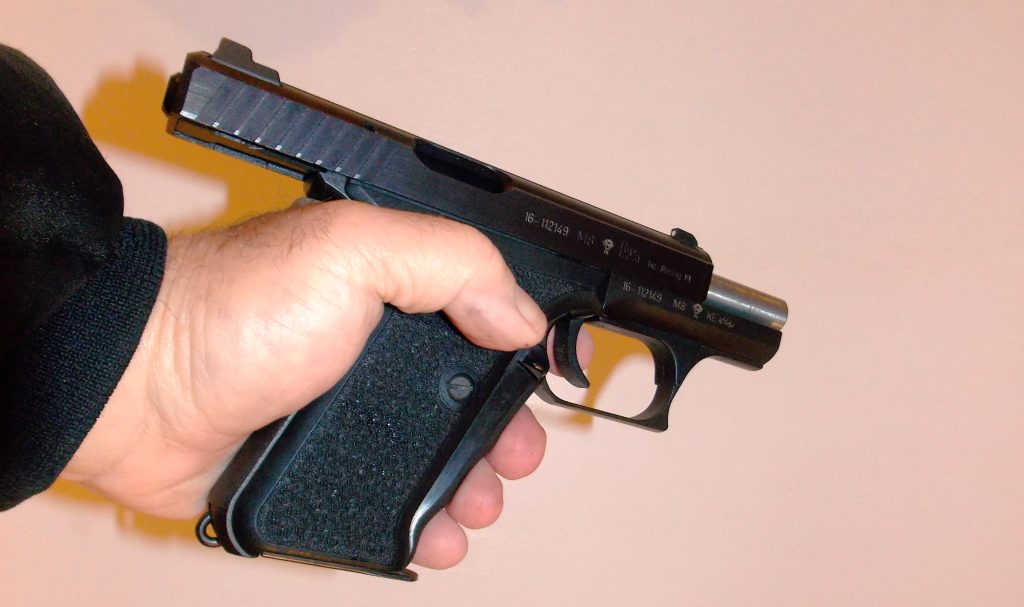
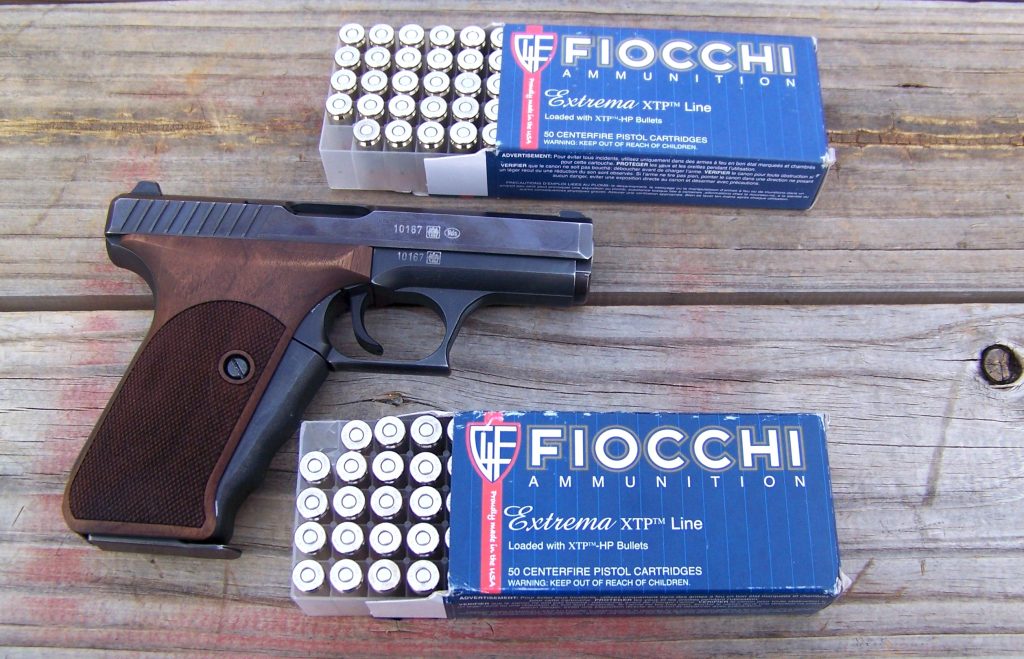
The 115-grain Extrema has proven a good performer. The 123-grain Combat FMJ load is one of my all-time favorite loads for achieving the best accuracy from service grade handguns. The Fiocchi 124-grain Extrema load is also a good performer. I have also found the new SIG SAUER 124-grain JHP gives good accuracy and a clean powder burn. This isn’t a handgun I am likely to experiment with but I have also worked up a practice hand-load with the Nosler 115-grain JHP and enough WW 231 for 1040 feet-per-second. Accuracy ranges from good to outstanding.
When firing the pistol on a demanding combat course the HK P7M8 leaves nothing to be desired. The handgun’s all-steel construction results in excellent control. The pistol is fast on target. The low-bore axis and excellent, crisp, short and light trigger action results in excellent hit probability. There is no handgun faster into action and more controllable in 9mm caliber, per my experience. The handgun was also designed to allow top-grade accuracy in case it was used in hostage rescue duty. Perhaps the P7M8 is owned simply because we can, or for pride of ownership. The pistol is accurate, reliable, and if properly cared for, should last a generation or more.
Loading Five shot groups, 25 yards
Fiocchi 115-grain EXTREMA 2.0 inches
Fiocchi 124-grain EXTREMA 1.9 inches
Fiocchi 147-grain JHP 2.3 inches
Nosler 115-grain JHP handload 2.25 inches
Early Model P7 accuracy groups
Fiocchi 115-grain EXTREMA 2.25 inches
Fiocchi 123-grain COMBAT FMJ 1.8 inches



